What is Thyroid Eye Disease?
Thyroid Eye Disease (TED) or Graves orbitopathy is an autoimmune disease that causes the inflammation of the soft tissue around the eye (muscles, fat, or skin). It is most commonly associated with hyperthyroidism (overactive thyroid) but can be associated with any of the following thyroid statuses:
1) Hyperthyroidism, whereby you have an overactive thyroid
2) Hypothyroidism, whereby you have an underactive thyroid
3) Euthyroid, whereby your thyroid is considered ‘normal’
Symptoms of Thyroid Eye Disease
TED symptoms can vary and may include any of the following: red eyes, bulging of eyes, dry eye, eyelid swelling, eyelid retraction (showing more of the whites of the eye), and double vision. In rare circumstances, the swelling can impact a person’s vision. The symptoms typically last between 9 months to a year and may get worse before stabilizing.
Although there is no cure, surgery can effectively reverse the bulging eyes with orbital decompression, the retracted eyelids with lid retraction repair, and double vision with strabismus (eye muscle) surgery.
Treating Thyroid Eye Disease
When treating TED, we are most commonly managing the symptoms, rather than curing the disease in mild cases. TED has a natural course of its own; it tends to get worse before it stabilises. The treatment of your thyroid is an important part of care for this condition. As such, Dr. Yin will work closely with your endocrinologist to provide the best quality of care.
The treatment of TED will vary depending on whether the disease is active or if it has stabilized.
Treatment for when the disease is active
When the disease is in its active state, radiation or medication can be used to reduce the inflammatory symptoms. If there is an impact on the optic nerve and the disease is impacting your vision, we can perform decompression in an attempt to prevent vision loss. Learn more about our decompression process below.
Surgical Treatment for when the disease is stable
When your disease is in a stable condition, there are three types of surgery that we can perform to restore the function and appearance of your eyes:
Decompression
Decompression recesses the eye back for those who experience eye bulging. This procedure usually takes around 1-1.5 hours, and the patient is fully asleep with general anesthetic during the surgery. Recovery times vary depending on the individual and level of post-surgery care, but swelling and bruising tend to last between 2 to 3 weeks.
To help your recovery process following decompression, be sure to take it easy, use cold compresses, and avoid any strenuous activity.
Strabismus: Eye muscle alignment surgery
In the instance that you may need eye muscle alignment, we will refer you to a specialist for this type of surgery.
Eyelid surgery
If your eyelid is retracted (showing more of the whites of the eye), we would perform eyelid surgery. Here, we’re loosening the muscle in the eyelid to adjust the eyelid position. This procedure takes between 30 minutes to an hour and is performed under local anesthesia (awake). Like any surgical procedure, the recovery is dependent on the patient, but usually slight swelling and bruising can be experienced following surgery.
Thyroid Eye Disease in Canada
There is a new treatment under investigation for the active state of the disease. Radiation is being investigated for use in mild cases to decrease inflammation and double vision, and there are a few drugs under research to try to modify the course of thyroid eye disease. While these are still in the research phase, not all are available in Canada, though there are efforts across the country from specialists to make this drug available to patients.
If you are experiencing symptoms of thyroid eye disease which is impacting your vision, get in touch with your family doctor or eye care provider for a referral to us.

